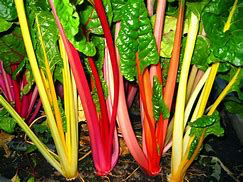“Though snails are exceedingly slow, there’s one thing I’d like to know. If I out run ‘em round the yard, how come they beat me to the chard?” — Allen Klein

FAST FACTS
Benefits and nutritional information:
- While most people think of leeks as something to add to soup, where their sweet, oniony flavor adds depth, they are being used more and more in a variety of other dishes as well as being appreciated on their own as a side-dish.
Starting:
- Seeds should be sown about an inch apart in pots or trays, then covered with a thin layer of potting soil and watered in.
- Sowings should be placed in a sunny indoor windowsill or a greenhouse. Keep the potting soil moist but not too wet.
- To encourage the plants to develop strong roots and a stocky stature, use scissors to give them weekly haircuts. Cutting off all but the bottom 2” of the plant will help force the plant’s energy back into the roots.
- Begin hardening off the seedlings a couple of weeks before planting them outside.
- When planting outside, plant seedlings 6” to 8” apart in rows 18” to 24” apart. It’s recommended that transplanting be done by poking a hole in the soil with a “dibble” or a broomstick end and setting the plant in the hole.
- To maximize space, grow quick-growing salad leaves in between your newly planted leeks. These will need to be harvested by mid-summer, when the leeks will need the space to grow well.
- As leeks grow, mound soil around the base of the plant.
When to plant:
- Since leeks can take from 120 to 150 days to reach maturity after planting seeds, the process of growing them is more complicated than for most vegetables. In essence, leeks should be started inside during late winter and grown to from 6” to 8” in height before being transplanted out into the garden bed.
Thinning, training
- When plants reach 3” tall they may be thinned to between 6 and 12 inches apart, depending on what size plants/leaves you prefer.
Signs of over-watering, nutrient deficiency
- Normal chard leaves are a dark, leafy green. Older leaves that turn yellow and curl toward the bottom may simply be from the plant shedding its older growth; however
- When younger leaves yellow or whiten in the middle it could indicate a major nutrient deficiency.
- It’s important to remember that overly wet soil can prevent proper uptake of nutrients, and therefore be a false indicator of nutrient- deficient soil.
Pests and pest controls
- As the quotation at the begging of the page suggests, slugs can be a major problem with chard.
- Leaf miner, which appears as skeletonized patches in leaves, is the chief pest in established plants.
- Aphids may also become established on chard leaves. Check the underside of leaves to detect them early.
- Cercospora Leaf Spot is a fungal disease is recognized by brownish-grey or black spots with reddish-purple halos.
- Flea beetles may also attack chard. This will be evidenced by a pattern of shotgun pellet-like holes in the leaves.
Harvesting
- Chard is best treated as a “cut-and-come-again” crop. This technique involves only taking a few older leaves at a time from each plant and allowing younger leaves to continue growing for additional harvests later in the season.
